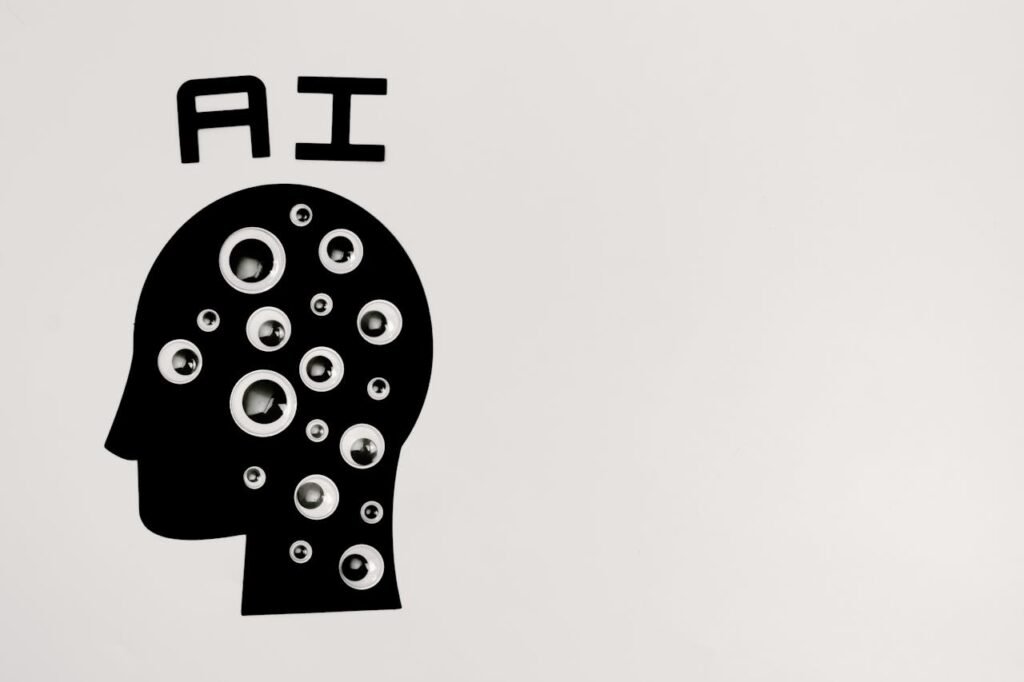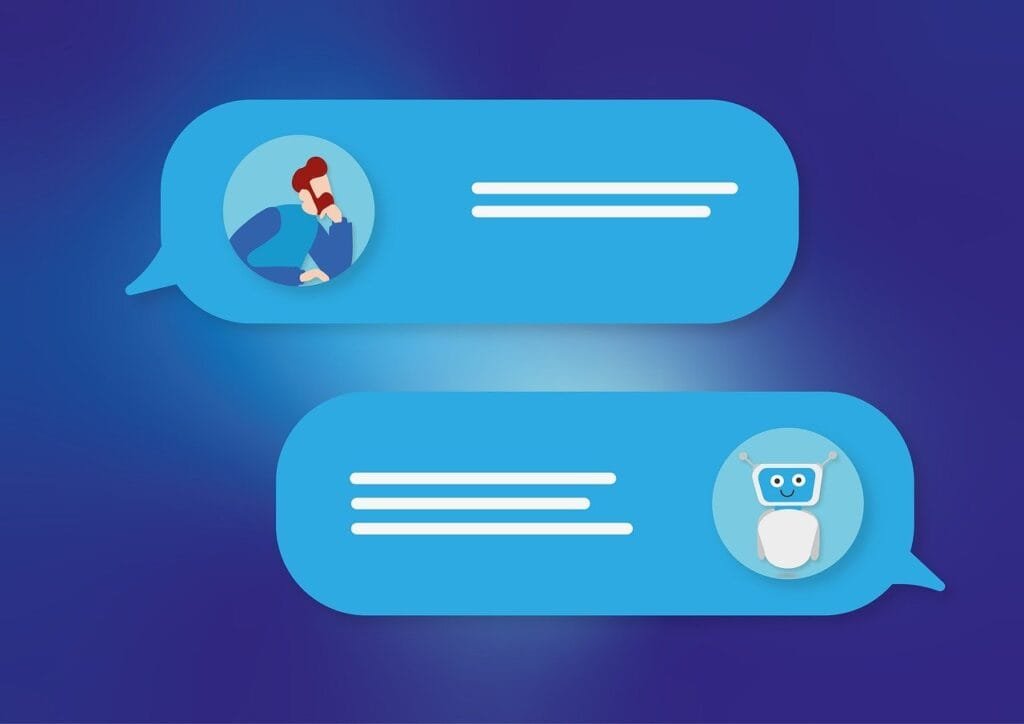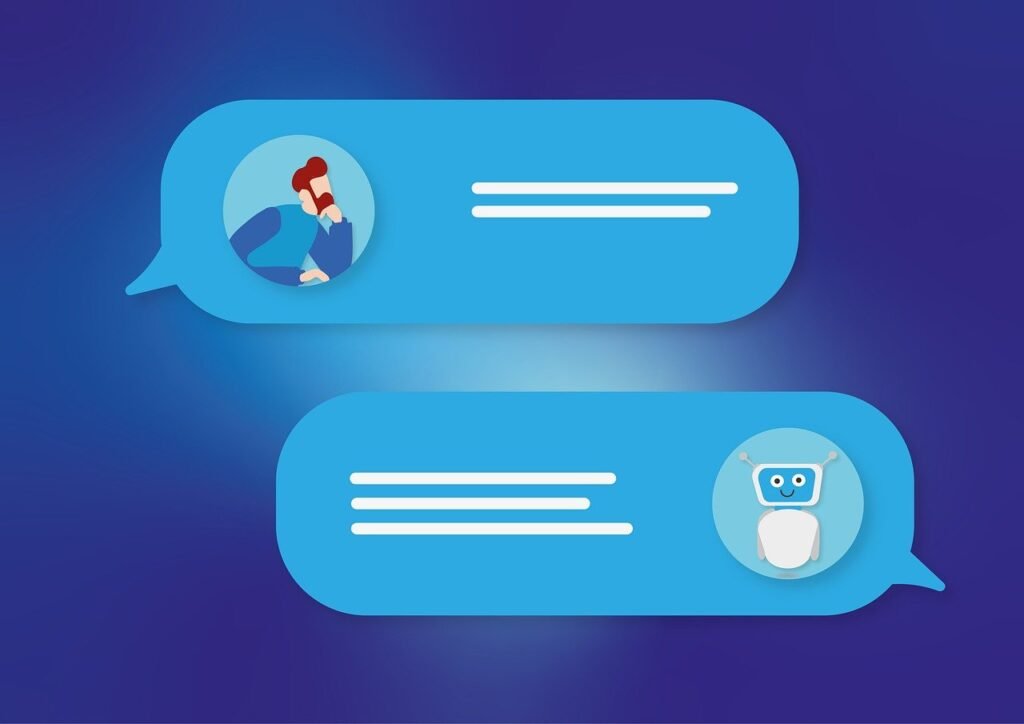In today’s fast-paced world, marketing teams are expected to do more with less. For small teams, every minute counts, and budgets are tight. That’s where AI comes in. With the right tools and a few strategic adjustments, lean marketing teams can get more done, scale their efforts, and focus on creativity—all while keeping costs low.
In this article, we’ll explore affordable AI tools and smart tactics that can help marketing teams streamline their workflows, create better content, and connect with audiences effectively, even on a shoestring budget.
Why AI Matters for Lean Marketing Teams
For small or lean marketing teams, staying competitive means finding ways to be efficient without compromising on quality. AI is not just a “nice-to-have” technology; it’s a powerful tool that can help you save time, automate repetitive tasks, and even improve your decision-making. From automating customer interactions to generating content ideas, AI can significantly lighten your workload and allow your team to focus on the strategic and creative parts of marketing.
But AI isn’t just about automation. It can also help you analyze customer behavior, predict trends, and even personalize your content at scale, something that would otherwise require a big team. Let’s dive into how you can use AI tools effectively to get the most out of your marketing efforts.
1. Using AI for Content Creation and Curation
Content is the backbone of any marketing strategy. But creating high-quality content consistently is challenging, especially for small teams. AI tools can help by generating ideas, drafting copy, and even curating relevant content for your audience. These tools allow you to produce more content without sacrificing quality.
Generate Ideas with AI-Powered Research Tools
AI tools like AnswerThePublic or BuzzSumo can provide insights into what people are talking about in your industry. They show you common questions, trending topics, and popular content, making it easier to brainstorm ideas that resonate with your audience. Rather than spending hours searching for inspiration, you can use these tools to jumpstart your content planning.
Drafting Content with AI Writing Assistants
AI writing tools like ChatGPT or Jasper can be powerful allies for lean marketing teams. These platforms can help you draft articles, social media posts, and even email copy quickly. For example, you can outline a blog post, then use the AI to fill in the details. Once you have a draft, it’s easy to tweak the content to match your brand’s voice and tone.
It’s important to remember that AI-generated content still needs a human touch. The best results come from treating these tools as assistants, not replacements. You can speed up the initial writing process and then add personality and polish to make the content truly unique.
Content Curation Made Easy
AI tools like Curata and Feedly can help you find and share relevant content that adds value to your audience. These tools analyze tons of articles and highlight those that match your topics of interest, saving you hours of scrolling. By sharing curated content alongside your original posts, you can keep your social media feeds active and engaging without overloading your team.
2. Streamlining Social Media Management with AI

Social media management can feel like a never-ending task, but AI tools are here to make it easier. From scheduling posts to analyzing engagement, AI can handle much of the routine work, allowing your team to focus on strategy and creativity.
Automating Social Media Posting
Scheduling tools like Buffer or Hootsuite allow you to plan your social media calendar in advance. With AI-driven analytics, these platforms can even suggest the best times to post based on your audience’s engagement patterns. This means that you can schedule a week or month of content in one sitting and let the AI handle the timing.
Some platforms, like Later and Sprout Social, also offer content suggestions and templates, making it easier to create visually appealing posts quickly. These tools free up your team’s time by handling the more repetitive aspects of social media management, so you can focus on engaging with your audience in real-time.
Engaging with Your Audience Using Chatbots
For small teams, handling every comment or message on social media can be challenging. AI-powered chatbots like MobileMonkey and ManyChat can help by automating responses to common questions. These chatbots can answer simple queries, provide links, and even collect customer information, all while you focus on higher-level tasks.
Using chatbots for initial customer support can enhance the customer experience without requiring your team to be online around the clock. You can always jump in to answer more complex questions, but letting chatbots handle the basics ensures that no message goes unanswered.
3. Enhancing SEO with AI Tools
Search engine optimization (SEO) is essential for attracting organic traffic, but it’s often time-consuming. AI tools can simplify keyword research, content optimization, and even link building, helping your team rank higher on search engines without hours of manual work.
Simplify Keyword Research
Keyword research can be overwhelming, especially if your team has limited time. Tools like Ahrefs and SEMrush use AI to identify keywords that are both relevant and achievable. They can also suggest related keywords, show you which terms your competitors are ranking for, and highlight low-competition opportunities. By streamlining keyword research, these tools allow you to focus on content that’s more likely to drive results.
Optimize Content for Search Engines
Once you have a keyword, tools like Surfer SEO and MarketMuse can help you optimize your content. These tools analyze top-ranking pages for your target keywords and provide recommendations on how to improve your co ntent. They suggest keywords to include, ideal content length, and even the best layout for readability. With these insights, you can create content that’s both SEO-friendly and valuable to your audience.
For a lean team, using AI for SEO can be a game-changer. Instead of guessing what works, you’re making data-driven decisions that increase your chances of ranking well and attracting more visitors to your site.
4. Boosting Email Marketing with Personalization
Email marketing is one of the most effective channels for converting leads into customers. With AI, you can take personalization to a whole new level, delivering emails that feel relevant and engaging to each recipient.
Create Dynamic Content Based on User Behavior
AI-powered email marketing platforms like ActiveCampaign and Mailchimp offer dynamic content features that tailor your emails to each subscriber’s behavior. For instance, if someone browses a certain product category on your site, you can automatically send them an email featuring those products. This level of personalization increases the chances of conversions by making the content more relevant.
With AI’s help, you can also set up behavior-triggered emails. For example, if a customer abandons their cart, the AI can send a reminder email a few hours later. By automating these actions, you can create a seamless customer journey without manual intervention.
Optimize Send Times and Subject Lines
AI tools can analyze your subscribers’ engagement patterns and suggest the best times to send your emails. They can also help you test different subject lines, analyzing which ones are likely to perform better based on past campaigns. This level of optimization increases open rates and click-through rates, ensuring your messages are reaching your audience at the right time.
5. Enhancing Customer Insights with AI Analytics

Understanding your customers is key to any marketing strategy. AI-powered analytics tools can help lean teams gain deeper insights into customer behavior, preferences, and pain points, allowing you to refine your approach and make smarter marketing decisions.
Analyze Website and User Data
Platforms like Google Analytics and Heap use AI to go beyond basic metrics. They can track user behavior across your website, identify patterns, and even predict future actions. For example, if you notice a high bounce rate on a particular page, you can investigate further to understand what’s causing it and make improvements.
Segment Your Audience for Better Targeting
AI-powered customer data platforms (CDPs) like Segment or Optimove can help you segment your audience based on behavior, demographics, or purchasing history. These tools automatically group users with similar characteristics, allowing you to tailor your messaging more effectively. This kind of targeted approach ensures that your marketing efforts are reaching the right people, making each campaign more impactful.
With AI-driven segmentation, you can easily create custom audiences for different campaigns, from loyal customers to new leads. This makes it easier to deliver relevant content and increase the chances of conversions without exhausting your team’s resources.

Related: Check out our free tools:

6. Streamlining Paid Advertising with AI
While organic growth is essential, paid ads can help boost visibility. For lean teams, optimizing ad spend is crucial, and AI tools can assist by helping you target the right audience, create better ads, and track results.
Automate Ad Campaign Optimization
AI-powered platforms like Google Ads and Facebook Ads offer automation features that make campaign management easier. They use machine learning to optimize bids in real-time, ensuring that your ads get the best placements for your budget. This automation helps you reach your target audience without having to constantly monitor and adjust bids manually.
Create Ads that Resonate
AI tools like AdEspresso help you create and test different ad variations quickly. They provide insights on what works for different audience segments, helping you create ads that resonate. Instead of running one ad and hoping for the best, you can test multiple versions, allowing the AI to find the winning combination that drives the most engagement.
7. Measuring and Optimizing Performance with AI-Driven Analytics
No marketing strategy is complete without a feedback loop. AI analytics tools allow you to measure the performance of your campaigns in real time, showing you what’s working and where there’s room for improvement.
Identify Trends and Patterns
AI tools like HubSpot and Kissmetrics analyze data across channels, giving you a complete picture of your marketing efforts. These platforms highlight trends and patterns, making it easier to spot which strategies are driving the best results. For lean teams, this means spending less time on reports and more time on actionable insights.
Make Adjustments on the Go
With AI-driven analytics, you can monitor campaigns continuously and make adjustments as needed. If a social media post isn’t performing well, or an email campaign has a low open rate, you can tweak your approach in real time. This level of agility allows your team to stay responsive and maximize the impact of each campaign.
Embracing a Culture of Continuous Learning and Adaptation

One of the most important aspects of successfully leveraging AI in marketing is creating a culture of learning and adaptability. AI tools are constantly evolving, with new features and functionalities introduced regularly. For lean marketing teams, this evolution represents an opportunity to stay competitive, provided the team is willing to embrace change, experiment, and learn from the results.
Stay Updated with AI Developments
Make it a practice to stay informed about the latest AI developments and trends. Many AI and marketing platforms offer webinars, newsletters, and blog posts that cover new updates and best practices. Encourage your team members to engage with these resources and bring new ideas to the table. Learning doesn’t have to be a solo activity—host regular knowledge-sharing sessions where team members can discuss new techniques, share insights from recent campaigns, or even analyze case studies of other brands using AI.
The marketing landscape changes quickly, and having a team that’s proactive about staying updated gives you a significant edge. With a solid understanding of the latest advancements, your team can make smarter, quicker decisions and stay ahead of competitors who may still be catching up.
Test, Learn, and Scale What Works
One of the great advantages of AI is that it allows you to run small-scale experiments and gauge results before making a larger investment. For instance, if you’re testing a new AI tool for social media scheduling or a content-generation tool, start with a limited campaign. Track the performance closely to see if it meets your objectives, then decide if it’s worth implementing on a larger scale.
Encourage a test-and-learn mentality within the team. AI tools often offer extensive data on performance metrics, making it easier to identify what works and what doesn’t. When something works well, document the process and insights so the team can replicate and refine these tactics in future campaigns. A continuous cycle of testing and learning ensures that your strategies are always improving and adapting, even as the market changes.
Foster a Collaborative Environment
While AI tools are powerful on their own, their real potential is unlocked when team members collaborate effectively. Encourage your team to share insights and discuss how different AI tools can complement each other. For instance, the content team might use AI-powered research tools to identify trending topics, which can then be shared with the social media team to plan posts that align with audience interests.
With everyone on the same page, your team can leverage AI more strategically. Collaboration fosters creativity and ensures that each team member has a stake in the success of AI-driven strategies. It also prevents silos from forming, so insights from one part of the team can benefit the entire marketing operation.
Focusing on Ethical and Authentic AI Use
As you implement AI in your marketing, it’s crucial to balance automation with authenticity. Lean marketing teams often face the temptation to rely heavily on automation to save time. However, AI should be used to enhance, not replace, the personal touch that customers value. Authenticity and ethical considerations in AI use can significantly impact your brand reputation, especially in an age where customers are increasingly mindful of privacy and data security.
Be Transparent with Your Audience
If you’re using AI-driven chatbots to handle initial customer interactions, let your customers know they’re chatting with a bot. Transparency builds trust, and most customers are happy to interact with AI if it provides value. Make it easy for customers to escalate to a human agent if needed, ensuring they always have a personal touch available when it matters most.
Similarly, when using AI to analyze customer data, ensure your practices align with privacy regulations like GDPR or CCPA. Let your audience know how their data is being used, and provide easy options for opting out. Respect for customer data is fundamental to ethical marketing and can help you avoid potential backlash that could harm your brand’s reputation.
Maintain a Human Touch in AI-Generated Content
AI can generate content, but it can’t fully replicate human creativity, empathy, or personal storytelling. For lean teams, the best approach is to use AI to handle the heavy lifting—research, initial drafts, or data analysis—while your team adds the final polish and personality. Make sure that each piece of content reflects your brand’s unique voice, values, and personality.
Consumers can tell when content lacks authenticity, so invest time in making sure each piece feels genuine. This combination of AI efficiency and human creativity allows you to produce content at scale without sacrificing quality or authenticity.
Preparing for the Future: Scaling with AI

For lean marketing teams, one of the most exciting aspects of using AI is the potential to scale without adding extra team members. As your brand grows, AI tools can help you handle larger volumes of data, reach more customers, and produce more content, all while maintaining a lean team structure. By establishing a solid foundation now, you’re setting your team up to grow seamlessly.
Automate Processes for Long-Term Scalability
As you continue to use AI, identify areas where automation can simplify workflows not just in the short term but as you expand. For instance, if email marketing is generating positive ROI, consider automating more of the customer journey, from welcome emails to post-purchase follow-ups. By creating automated workflows, you’re building a system that can scale with your business, allowing you to manage more customers without a huge increase in workload.
Similarly, as your content needs grow, consider building a content repository that leverages AI to suggest, update, and repurpose existing content. This way, even as demand increases, your team can keep up without creating everything from scratch. A scalable AI-driven system frees up time for your team to focus on strategy and innovation rather than day-to-day management.
Embrace AI as a Collaborative Team Member
Think of AI as an extension of your team, rather than just a set of tools. The best results come from an approach where AI assists, your team refines, and together you create something impactful. With AI handling repetitive or data-heavy tasks, your team has more bandwidth to focus on high-impact work that AI can’t do—like developing creative campaigns, nurturing relationships, and planning strategic initiatives.
Track ROI and Make Data-Driven Decisions
Finally, make sure to track the ROI of each AI tool and tactic. As you continue to grow, budget allocation will become increasingly important. Knowing which tools bring in the most value allows you to reinvest wisely and expand the areas that are driving real results.
If you’re seeing high returns on AI-driven social media management, for instance, you might decide to increase your budget there or explore additional AI tools for social engagement. By keeping a close eye on your ROI, you can ensure that every dollar and minute spent is helping you reach your growth goals.
Final Thoughts: AI as the Catalyst for Lean Team Success
For lean marketing teams, AI offers an incredible opportunity to achieve big results without big budgets. By using AI thoughtfully, you can free up time, enhance your team’s productivity, and focus on the strategic, human aspects of marketing that resonate most with customers. From content creation and social media management to customer insights and email personalization, AI can be a powerful ally in delivering a seamless, efficient marketing strategy.
The key to success is balancing automation with authenticity, keeping a focus on ethics, and continuously learning and adapting to new developments. AI allows you to create a smarter, leaner, and more adaptable marketing team—one that’s ready to grow with your business and meet future challenges head-on. Embrace these affordable tools and smart tactics, and you’ll find that even a small team can achieve substantial growth, building a brand that’s both agile and impactful.
READ NEXT:
- Are Vanity Metrics Killing Your Marketing Efficiency? Here’s What to Track Instead
- Pinpointing Digital Marketing ROI: Why Your Metrics Aren’t Telling the Full Story
- Unlocking Real ROI in Digital Marketing: The Hidden Costs Draining Your Budget
- How Misaligned Marketing Funnels Are Blocking Your ROI Potential
- Best Digital Marketing Agency In Santa Ana, California
- Best Digital Marketing Agency In San Francisco, California





















